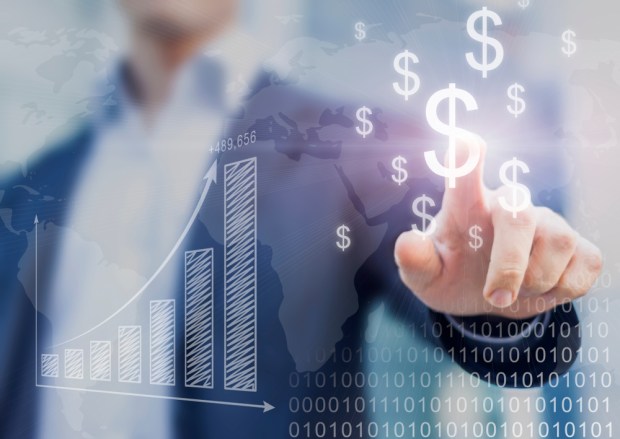The Numbers Behind Payment Executives’ 2018 Forecasts

PYMNTS.com got 39 of the payments industry’s top CEOs and executives to sound off on what’s next for the year and beyond. But just as it’s nearly impossible to predict with precision the future of an ever-changing, ever-innovating market, it’s just as difficult to draw a single conclusion from so many experts’ opinions. In short, while 2017 was the year of payments disruption, 2018 will be the year of the satisfied customer.
That doesn’t just mean consumers either. The newest PYMNTS eBook is full of expert insight into the future of B2B payments, from commercial cards to accounts receivable. This week’s B2B Data Digest pulls some of the highlights from that eBook and serves up the numbers behind the forecasts.
— $20 trillion: the expected valuation of the B2B payments market. That, said Cloud Elements Head of Strategy Ross Garrett, means the B2B payments industry needs to step up to the plate and perhaps even start acting a bit like B2C payments. That means continuing to break away from paper checks, which, the executive noted, still make up about half of B2B transactions, according to the Association for Financial Professionals. “Ultimately,” wrote Garett, “consumerization is making inroads, and 2018 can be a year of opportunity for B2B payments … market leaders should step up to the plate and embrace change — just as enterprise IT was forced to do more than a decade ago.”
— $18.5 trillion: the current valuation of the U.S. B2B payments market, but as Chen Amit, co-founder and chief executive officer of Tipalti noted, the definition of B2B payments is in flux, largely thanks to the changing definition of the supplier. “Supplier relationships are becoming more fluid, and the transactions with these suppliers will be driven by more digital means than invoice and purchase order processes,” he said. Leaders in this space will look at B2B payments as an opportunity to reduce friction in the customer experience.
— $1.1 trillion: the projected value of B2B eCommerce by next year. There is a huge opportunity for growth in the B2B eCommerce space, noted Dave Barrowman, head of Innovation at Skava. As technologies like artificial intelligence (AI) and machine learning permeate this market, the customer experience is changing. “Retailers are becoming increasingly aware of the importance of owning the relationship with valuable corporate and small business customers, prompting them to put renewed emphasis on their B2B capabilities,” said Barrowman. And while B2B commerce systems remain “rigid, expensive to implement and tedious to use,” the B2C experience will push the B2B market to offer the same customer experiences with greater efficiency and better interfaces. “2018 will see the emergence of new B2B platforms with interfaces that rival the best B2C experiences,” the executive predicted.
— 92 percent of bank professionals are interested in biometric technology, according to Oxford analysis, while this industry is also increasingly interested in artificial intelligence as well, said Ajay Bhalla, president of Global Enterprise Risk and Security at Mastercard. Both of these technologies have broad potential in the B2B space, either by using biometrics to authenticate a traveling employee’s spending on behalf of a company or by using AI-powered technologies in corporate accounting and financial management. “The investment in technology, like physical biometrics, advanced behavioral analytics, risk-based authentication and artificial intelligence will grow,” said Bhalla.
— 60 days of capital float make commercial cards an enticing B2B payments option this year, said Dean Leavitt, founder and chief executive officer at Boost Payment Solutions. The 1.5 percent rebates companies can obtain by using cards to make payments is attractive too. But there is more behind the growing use of commercial cards, the executive said: Suppliers benefit from faster invoice payment times, and industry players are making it easier than ever for these vendors to accept card payments via buyer-initiated payments and straight-through processing.
— $10: the estimated cost per issued paper check. As the payments industry continues to innovate, addressing the ongoing use of paper checks, especially in B2B transactions, will be critical. Buyer-initiated payments can make it far easier and more affordable for suppliers to accept digital payment methods, said Drew Edwards, chief executive officer at Ingo Money. “Push payments cost a mere fraction” of the cost of paper checks, he said. “They also provide convenience and tracking throughout the transaction that can bring clarity to the entire process.”
Download and read the full eBook here.
